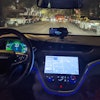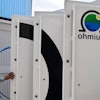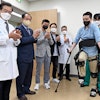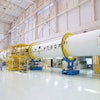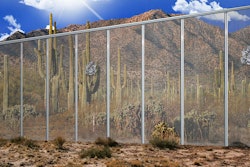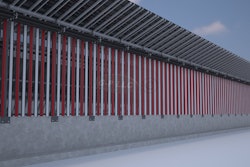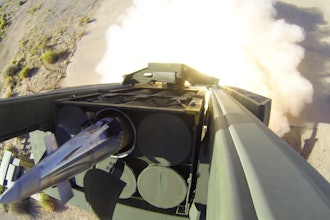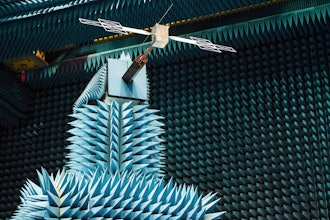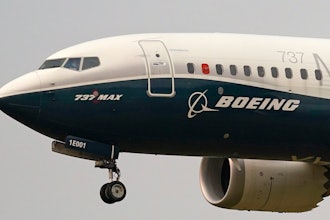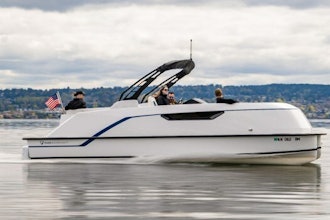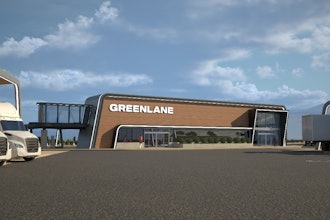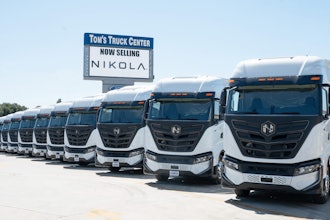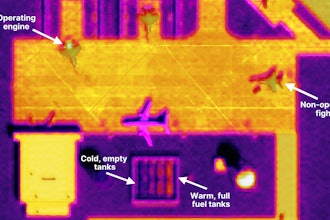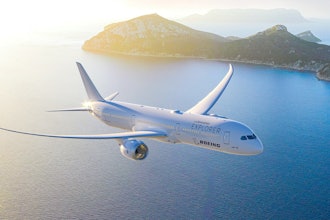
SAN DIEGO (AP) — The U.S. Border Patrol is considering a surveillance balloon that can be quickly moved to spot illegal activity, part of an effort to see if more eyes in the sky translate to fewer illegal crossings.
Agents in Texas recently finished a 30-day trial of the camera-toting, helium-filled balloon made by Drone Aviation Holding Corp., a small startup that named former Border Patrol chief David Aguilar to its board of directors in January. The 3-year-old, money-losing company gave Aguilar options that may prove lucrative if it gets more orders for its proprietary model.
The trial comes as agents test hand-launched drones, which are relatively inexpensive but hampered by short battery life and weight limits. The Border Patrol has also used six large tethered balloons in Texas since 2012, acquired from the Defense Department.
President Donald Trump has pledged to add 5,000 agents, but hiring has been slow. If drones and balloons are deployed more widely, fewer agents may be needed.
The new balloon - called Winch Aerostat Small Platform, or WASP - drew the Border Patrol's interest largely to save money. The company says one costs $800,000 plus about $350,000 a year to operate, depending on how often it's moved. By contrast, operating the current fleet of six large balloons costs $33 million a year, according to U.S. Rep. Henry Cuellar, a Texas Democrat.
The Border Patrol, in response to questions from The Associated Press, said Thursday it was evaluating results of the trial. The agency hadn't previously disclosed the trial, but the AP learned details from Aguilar, Cuellar and head of the agents' union Brandon Judd.
Agents began experimenting with the WASP Aug. 21 at the Border Patrol's Rio Grande City station and with a mobile response team in Rio Grande Valley, the busiest corridor for illegal crossings.
Cuellar, who was briefed on the trial during a visit last month, said the agency's top official in the region was "very complimentary" of the technology.
The balloons can be assembled and deployed by two or three agents in less than an hour and remain aloft while tethered to a moving vehicle. The large balloons, controlled remotely from trailers, can take days to assemble, require more than twice the crew and are almost never moved.
The WASP also may perform better in strong winds, which Aguilar said was evident as Hurricane Harvey hit nearby. Drone Aviation says it can handle gusts up to 45 mph (72 kph).
On the flip side, the balloons can't carry as much equipment. One U.S. official familiar with the technology said their cameras scanned 4 or 5 miles (8 kilometers). The larger models, with their heavier gear, can peer about 20 miles (32 kilometers). The official spoke on condition of anonymity because the Border Patrol hadn't publicly discussed the balloons.
Judd, president of the National Border Patrol Council, said it would "be a great piece of equipment for us." The official said a decision was expected within months.
Aguilar appears ideally suited to make the company's case. He was Border Patrol chief from 2005 to 2010 and retired from government in 2013 after stints as deputy and acting commissioner of its parent agency, Customs and Border Protection. He discusses border issues at conferences and in congressional hearings.
Drone Aviation pays Aguilar $24,000 a year and granted options to buy 50,000 shares for $2.90 apiece in January 2018 and 50,000 in January 2019 at the same price. The stock rose 8 cents, or 8.1 percent, to $1.07 Thursday in over-the-counter trading.
The company, backed by billionaire investor Phillip Frost, posted a loss of $8.5 million on revenues of $1.5 million last year. It employs 24 people at its Jacksonville Florida, headquarters, according to a presentation for investors in January.
The investor presentation touted Aguilar's key relationships to drive growth.
Companies often recruit former officials to their boards and executive suites to help pitch their former agencies. Defense contractors are stacked with former Pentagon officials.
Such arrangements, while widespread and legal, rile some critics of corporate influence on government.
"It does raise issues for people about whether there's kind of an inside track, a revolving door, between government and the private sector," said Lawrence Noble, general counsel for The Campaign Legal Center, a watchdog group in Washington.
Aguilar, who joined the Border Patrol in 1978 and climbed the ranks, is a principal at Global Security and Innovative Strategies, a Washington consulting firm that includes a former Secret Service director and a former Homeland Security Department chief of staff. He said Drone Aviation approached him, and he made introductions to the Border Patrol after becoming convinced the aircraft would help.
Aguilar said it's healthy for the military and law enforcement agencies to rely on former officials in the private sector.
"This was an assessment, an evaluation, a comparison," he said. "Now it's up to the government to get to where they want to go, need to go, or not."
